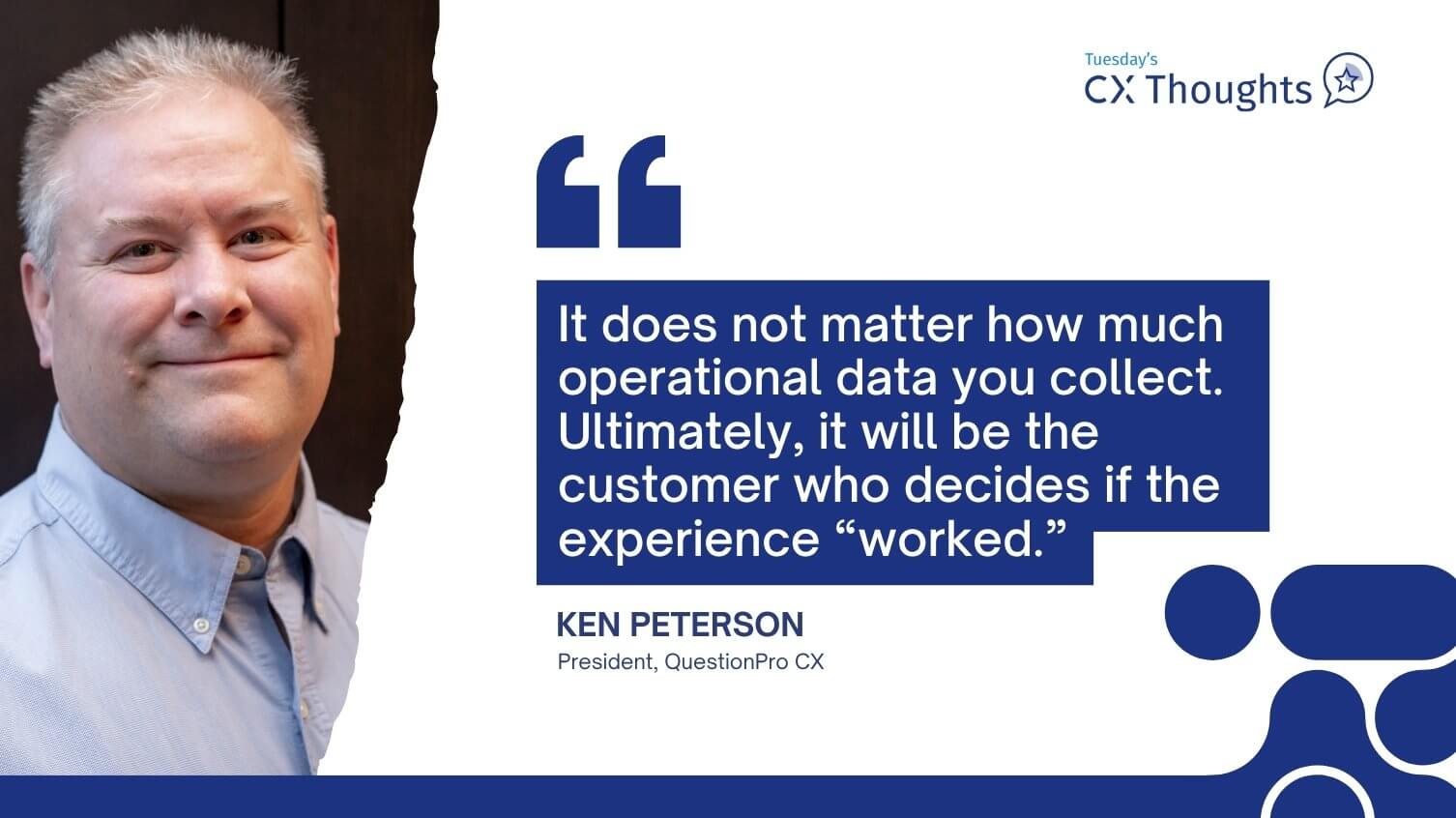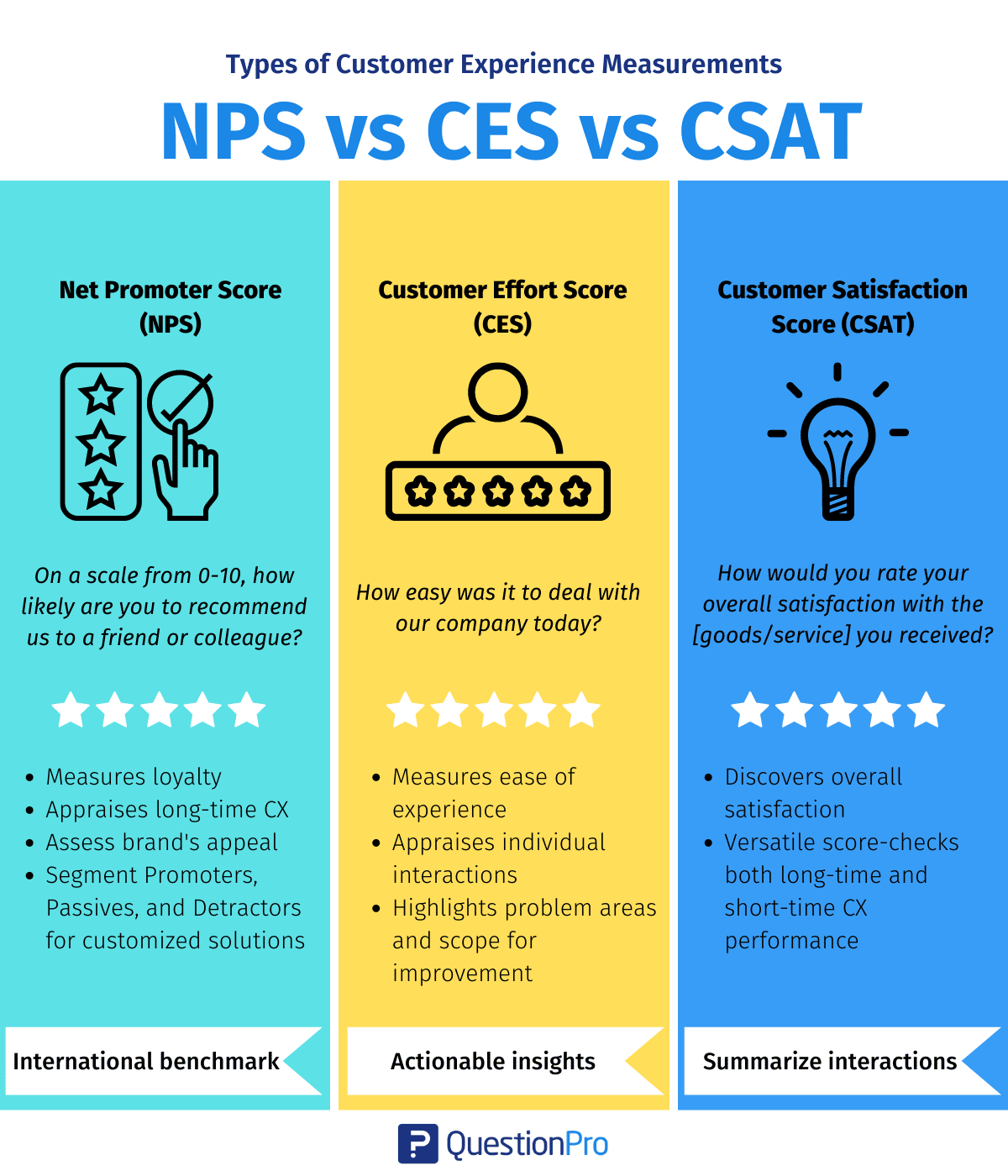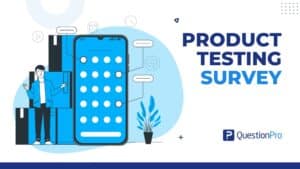
TCXT is a section of our blog where our Director of QuestionPro Customer Experience reflects and shares his thoughts on everyday moments and their relationship to customer experience.
Want to hear Ken Peterson’s thoughts directly? Watch the video summary here:
A few weeks ago, I had the opportunity to spend time with my son, brother, and a friend at a concert, or really a series of concerts, in Denver. Across two days, there were two different opening acts each day, with the headliner – Metallica – playing two completely different set lists to finish off each evening. They called it a no-repeat weekend tour.

While we all were very excited to watch the headliner, I was also looking forward to seeing one of the opening bands – Ice Nine Kills – because I had never seen them live on stage before. I have listened to them over the years, and they have a consistent theme in their music (usually focused on bringing a musical score to horror movies from over the years). I had heard their shows were very “theatrical” in nature.
Certainly, it was unique to see zombies and chainsaw-wielding killers take the stage along with a band that was dressed up with button-down shirts. Yet, with all the anticipation, I was a little disappointed. It had little to do with their performance, choreography, or translation to live music. Rather, I believe the venue did not translate well into their type of show.
As the headline act, Metallica selected the venue, the stage design, and the audio technology for the show. It was amazing for that purpose, but it certainly did not completely fit the operating model that the opening acts might excel under.
I still enjoyed the show. If someone asked me if they should go to the same show in another city – well, that sort of depends. If they were going for Metallica, absolutely. If they were going just to see Ice Nine Kills, probably not. Was I satisfied? Absolutely. Would I recommend it? Depends and maybe. How much effort did I have to put in? Quite a bit (had to buy the tickets nearly a year in advance, had to fly from another state, and stay in the area at a hotel for the weekend). Am I likely to do it again? Yes!
I have said it many times before that choosing the right customer experience metric—NPS, CSAT, or Customer Effort Score (CES)—is critical at each touchpoint because each one captures a different dimension of customer sentiment, and using the wrong one can lead to misleading insights or missed opportunities for improvement. I understand the desire to have a “consistent metric” across all touchpoints, but rarely is that measure the NPS.
Why does the right metric matter? Each metric is designed for a specific type of feedback:
- NPS (Net Promoter Score) is a relationship metric intended to gauge long-term loyalty to the brand.
- CSAT (Customer Satisfaction Score) measures short-term satisfaction with a specific interaction or product.
- CES (Customer Effort Score) reveals how easy or difficult it was for a customer to complete a task or resolve an issue.
- Repurchase Intent reveals the ability to retain customers at the point of purchase or interaction.
When you consider each metric for a particular customer measurement, you must think about the actionable insights you hope to get out of your question. Using the right metric helps you pinpoint what needs fixing. For example, CES highlights friction points in company processes – even the most well-intended ones. CSAT identifies service or product issues at that touchpoint. The Net Promoter Score is a broader loyalty metric that helps to identify potential churn.
There is also the consideration of the strategic versus operational focus, where the NPS supports strategic decisions like brand positioning and customer retention, but CSAT and CES support operational improvements like customer support training or UX design tweaks. Also consider the alignment to the customer lifecycle in the journey and the persona. Is the customer in the early stages of the journey? CES helps assess and reduce onboarding friction. What should be the measure post-purchase? CSAT tells you how satisfied they are. Have they been customers for a while? Net Promoter Score can help track loyalty over time and can be an early warning indicator for churn.

Companies that align the right metric with the right moment in the customer journey tend to improve retention and reduce churn, increase repeat purchases and referrals, and make smarter investments in CX initiatives. If you’re designing a survey or feedback loop, QuestionPro can help you choose the best metric based on your goals.
One more important factor in understanding what actions to take: Actually read the open-ended feedback. For a long time, I have seen companies want better automated coding of the open-ended comments requested from customers in a survey. Applying themes to open-ended comments using some scheme will usually result in three things:
- You will have a classification and ranking of attributes that you likely already know and/or measure
- You will miss out on new or emerging concerns before they become a bigger distraction in the experience delivery
- You will miss out on unique ideas that can make your brand more innovative in the market; we also call it co-creation and innovation with customers
I recognize that the task of reading all open-ended comments would be daunting for any CX manager, but there are two ways you can tease out the new/emerging concerns and customer innovations without one person needing to read every comment:
- Using the QuestionPro exclusive AskWhy question type, you can have customers see other customers’ comments and vote on comments/ideas that they like, which will bring them up attention on the CX Manager dashboard widget
- Have an open dialogue with managers where they feel comfortable bringing good ideas to the forefront of the comments they read for their departments without repercussion
Too often, CX managers get caught up in “aligning metrics for executive reporting”. This results in the core of what customer experience measurement is all about being forgotten. Take a fresh look at what you are measuring, start a new customer journey map, assign the right metric to the right touchpoint, and take action on the feedback constructively. That is why we take on the customer experience philosophy of Understanding Journeys and Taking Action.
Measure the experience you are delivering to your customers
Understanding customer satisfaction levels and their perception is essential to evaluating the impact of our efforts across every aspect of our business. Our main goal remains the same: providing a great experience.
If you’re also interested in gaining deeper insights into your customer base, QuestionPro Customer Experience offers the necessary tools to help you achieve this. Schedule a demo now—we’ll be happy to guide you through the platform and learn about the challenges in reaching your goals.







